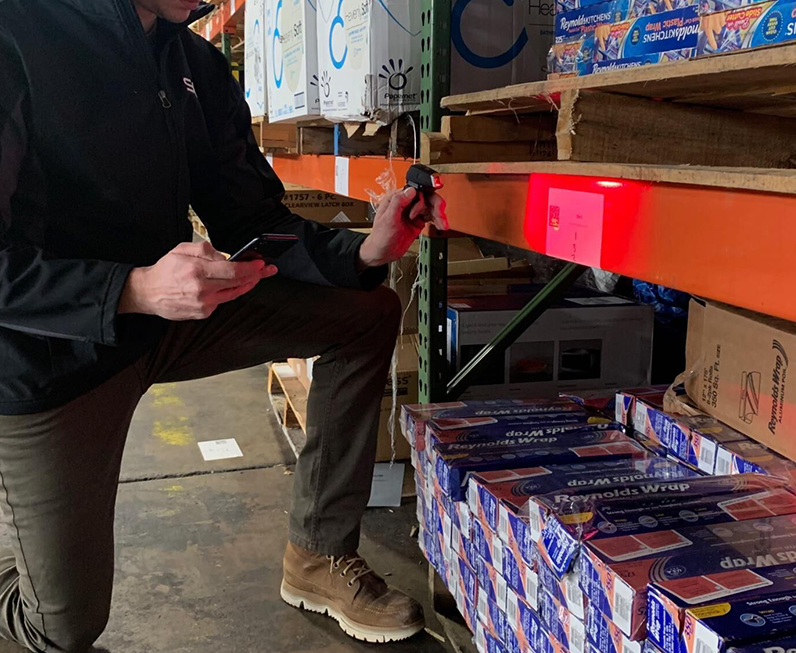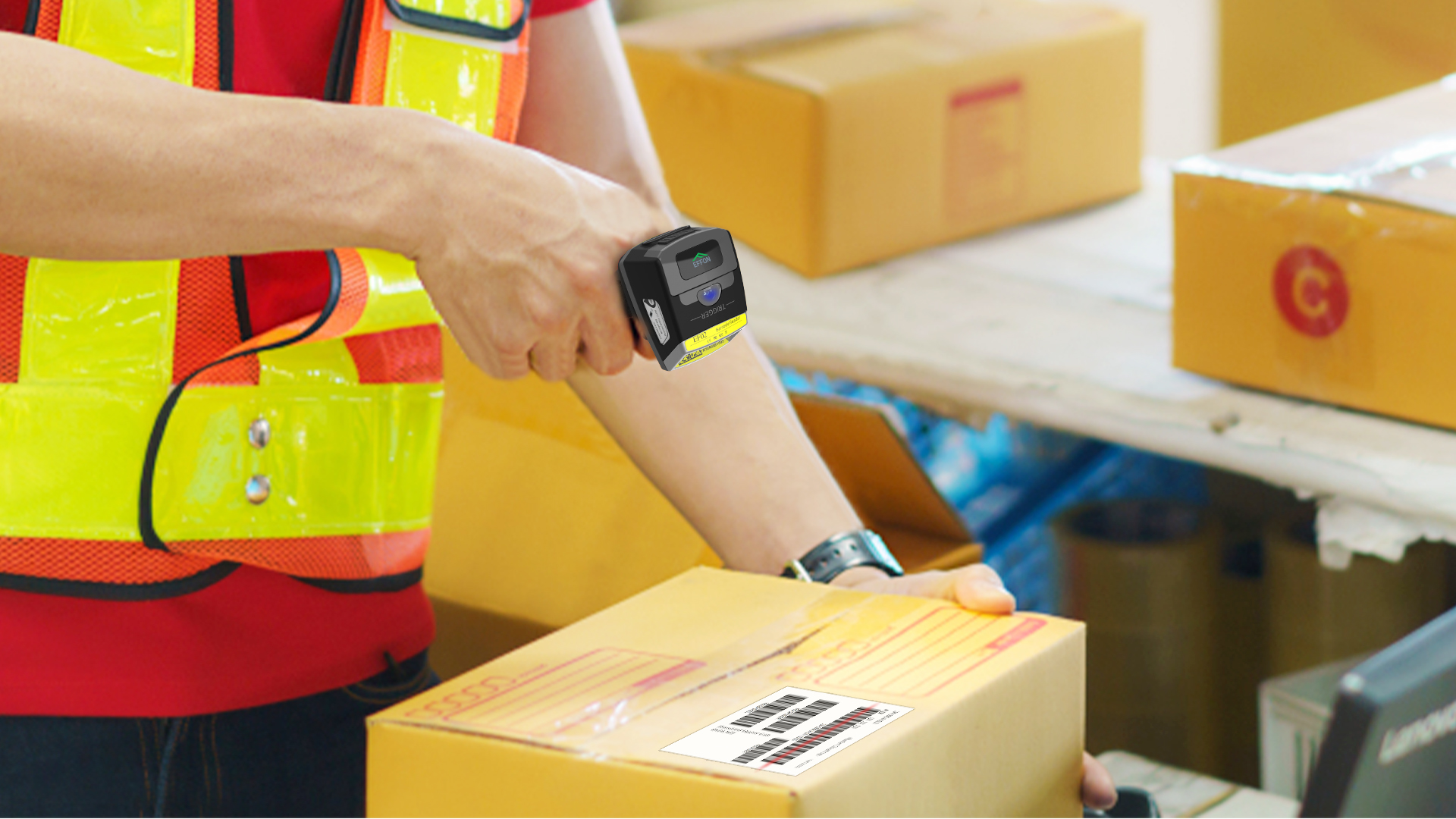
Ring barcode scanners, a form of wearable technology, help warehouses operate more efficiently. Companies experience fewer mistakes and reduce labor costs by using this innovative tool. Studies show that scanning barcodes immediately prevents picking errors, leading to more accurate orders. For instance, BMW implemented ring barcode scanners and saw a significant drop in picking mistakes. Although these scanners have a higher upfront cost, they save money over time through error reduction and increased speed. The best value depends on the warehouse’s size and specific needs.
Key Takeaways
Ring barcode scanners help workers pick orders faster. They also help workers make fewer mistakes. Workers can scan without using their hands. The scanners update data right away.
Ring scanners cost more at first. But they save money later by lowering labor costs. They also cut down on mistakes. Many times, they pay for themselves in a few months.
These scanners make workers feel better and safer. They help stop tiredness and pain during long work hours. This makes workers happier and helps them do more work.
Managers should use a checklist to pick the right scanners. They need to look at how strong the scanners are. They should check battery life, how easy they are to use, and if they work with their software.
Testing ring barcode scanners in real work is important. This helps make sure they save time and lower mistakes before buying them.
Ring Barcode Scanner Overview
Device Features
Ring barcode scanners are special wearable devices for tough warehouse jobs. They can connect with Bluetooth or USB. This lets them work with Android, iOS, and Windows. Many have batteries that last a long time. Some batteries can be taken out and replaced, so workers can keep using them.
Some important features are:
They scan fast and do not make many mistakes, even in dark places or if barcodes are hard to read.
You can scan from any direction.
They are strong and can handle water and dust. They have IP65 or IP66 ratings.
They do not break easily if dropped. They meet MIL-STD-810G rules.
The ring can be made bigger or smaller, so it fits well and feels good to wear for a long time.
The outside is easy to clean and does not let germs grow. It can be wiped with alcohol.
They make sounds, vibrate, or show lights when a scan works. This helps workers know they scanned right.
You can start using them quickly with plug-and-play or NFC tap-to-pair. This makes it easy for teams to use.
These wearable barcode scanners help workers scan without using their hands. This makes picking faster and helps stop mistakes in inventory.
Use in Warehouse Picking

Warehouse workers use these scanners to make picking orders easier. They wear the ring barcode scanners, so their hands stay free to grab items and move things. This makes it easier to work for a long time and helps workers feel less tired.
The ring scanners send barcode data right away to the warehouse management system. This means the inventory is tracked correctly and there are fewer mistakes. They work well with Android systems and popular warehouse software. This makes it easy to set up and does not slow down work.
When you use these scanners with light tag systems, it is even harder to make mistakes. This makes picking orders faster and more correct. Warehouses make fewer errors and get more done. That is why these wearable barcode scanners are a smart choice for today’s warehouses.
Cost Analysis
Upfront Costs
Ring barcode scanners cost more at first than regular handheld ones. Some, like the Zebra RS5100, have special features and are easy to use. This makes them more expensive to buy. Most wireless handheld barcode scanners cost between $90 and $150. Ring barcode scanners usually cost more because they are wearable and have extra features. Wired scanners are the cheapest because they do not need batteries or wireless parts.
Scanner Model | Price Range | Notes |
|---|---|---|
EFFON EF02 Ring Scanner | $90 – $150 | Bluetooth Ring Barcode Scanner |
Zebra RS6100 Ring Scanner | $347 | Bluetooth Ring Barcode Scanner |
Honeywell 8675I100SR | $550-788 | Bluetooth Ring Barcode Scanner |
Unitech MS633 Bluetooth Ring | $288 | Bluetooth Ring Barcode Scanner |
Opticon RS-3000 2D Ring Scanner | $495 | Bluetooth Ring Barcode Scanner |
EFFON T3 Tiny Ring Scanner | $99 | Bluetooth Ring Barcode Scanner |
Ring barcode scanners like the Zebra RS5100 cost more than these because of their design and features.
Implementation and Training
Warehouse workers must learn how to use ring barcode scanners. Training teaches them how to scan, fix problems, and use the software. Workers also learn how to use light scanners, set up their work area, and take breaks. This helps them not get tired or hurt. Training also shows how to spot mistakes and clean the scanner. Practice helps workers get faster and better at scanning. Safety lessons teach how to move safely and stand the right way.
Buying strong and comfortable ring barcode scanners can cost more at first, but it helps workers feel less tired and saves money later.
Maintenance
Ring barcode scanners can cost more to keep working than handheld ones. Their small batteries need to be charged or changed often. Because they are small, they can break more easily and cost more to fix. Handheld scanners last longer, have better batteries, and are easier to fix. Many handheld scanners have long warranties, so they are easier to keep working. Over time, ring barcode scanners can cost more, especially if they are used a lot or in tough places.
Benefits of Ring Barcode Scanner

Efficiency Gains
Wearable barcode scanners help workers use both hands. They do not need to pick up or put down a scanner. This saves time when picking orders. Workers can move around more easily and keep a good posture. They do not get tired as fast. This helps them work better and faster.
Picking is quicker, with some places seeing 25-30% faster speeds.
Big shipping companies saw picking speed go up by 30% after using these scanners.
The scanners are light, about 20 grams, so workers feel good during long shifts.
Feature/Metric | Details/Impact |
|---|---|
Picking Speed Improvement | 25-30% faster picking speeds |
Real-World Increase | 30% increase in picking speed reported by a major 3PL provider |
Error Reduction | 40% fewer mis-picks |
Ergonomics | Hands-free, lightweight (20g), reduces fatigue |
Integration & Training | Instant pairing, no IT needed, no training required |
ROI | Payback period 4-6 months, labor savings significant |
Workers can scan items all the time. The system updates inventory right away. This helps workers finish jobs quickly and correctly. Warehouses work better because of this.
ROI from Labor Savings
Ring scanners help warehouses save money fast. The HYCO Ring Scanner gives back 150% of its cost in one month. It pays for itself in four to six months. Some scanners can save up to 1700% of their cost in a year.
Labor costs go down because workers finish jobs faster. They also make fewer mistakes. This means less money spent on fixing errors or hiring new people. As more warehouses use these scanners, they keep saving money. Some scanners pay for themselves in just two months. This makes them a smart buy for picking orders.
Error Reduction
Ring barcode scanners help workers make fewer mistakes. They scan items quickly and check if the right product is picked. This stops workers from grabbing the wrong thing. It also keeps track of inventory better.
Using ring scanners with pick-to-light systems cuts picking mistakes by 35%. It also makes picking 20% faster. Studies show these scanners can lower mistakes by up to 50% compared to handheld scanners. Handheld scanners have mistake rates between 1% and 3%. This can cause returns and inventory problems. Ring scanners give feedback right away and let workers scan all the time. This helps workers be more accurate and make fewer mistakes.
Ergonomics & Worker Satisfaction
Wearable barcode scanners are good for workers’ bodies. Workers do not have to hold a scanner all day. This helps them avoid sore hands and arms. The design makes long shifts more comfortable.
The light, hands-free scanner lets them do more than one thing at once.
These scanners help workers feel better during the day and stay focused.
When warehouses use ring barcode scanners, workers are happier. They feel less stress and pain. This makes them want to keep working there. Big warehouses say workers feel better and do more with these scanners. The easy design helps new workers learn fast. This keeps workers focused and helps them do a good job. All these things make the workplace better and help keep good workers.
Comparison Wearable Barcode Scanner with Traditional Scanners
Cost Differences
Handheld barcode scanners cost less to buy at first. Many small businesses pick them for this reason. – Wearable ring barcode scanners cost more at the start. This can be hard for small teams. – Over time, wearable scanners can help save money. They help workers do more and lower labor costs. – Wearable scanners also help workers make fewer mistakes. This means there are fewer returns and less wasted time. – Wireless wearable scanners need battery care, which can cost more. Some corded wearable scanners do not have this problem. – When looking at total costs, managers should check how long scanners last, how much they cost to fix, and if they help workers do more.
Buying wearable ring barcode scanners costs more at first, but they can save money later. The hands-free design helps workers work faster and make fewer mistakes. These things often make the higher price worth it in the end.
Productivity
Wearable ring barcode scanners work best in busy warehouses. Places with lots of picking and packing see the most benefits. Workers can use both hands, so they get more done. The wearable design lets them move fast and handle items without stopping to grab a scanner.
Wearable scanners can make picking up to 40% faster. – They are good for logistics, manufacturing, and e-commerce warehouses. – Strong wearable scanners work well in tough places and last through long shifts. – When used with IoT and cloud tools, wearable scanners become smart tools for modern warehouses.
Corded wearable scanners always have power and send data well. This makes them good for places with lots of machines. During busy times, wearable scanners help teams keep up and stay productive.
User Experience
Warehouse workers like using wearable ring barcode scanners. They can use both hands all the time. This helps them work faster and keeps their muscles from getting sore. Workers finish jobs quicker and feel less tired after work.
Wearable scanners can make picking up to 50% faster than handheld ones. – The design helps stop injuries from doing the same motion over and over. – Sounds and vibrations help workers stay focused and scan right without looking at a screen. – The light, wearable shape keeps scanners from breaking and helps workers keep working.
Workers say wearable scanners feel good to wear for long hours. They also make fewer mistakes and scan more correctly. The wearable design helps keep workers safe and lets them work well all day.
Warehouse Case Examples

Real-World Results
Many companies now use ring barcode scanners in warehouses. A big car parts company picked items faster and made fewer mistakes. Workers scanned items quickly and sent the data to the inventory system. This helped the team keep good records and not miss products. A food warehouse had 40% fewer picking errors after using wearable scanners. Employees moved through aisles with both hands free. This made their work smoother and safer.
Tip: Companies using ring barcode scanners often have better inventory control and happier workers.
A global e-commerce company tried ring barcode scanners in its busiest warehouse. Managers saw that workers finished orders faster and kept inventory updated right away. The company spent less time training new workers because the scanners were easy to use.
Quantitative Outcomes
Ring barcode scanners give clear benefits for warehouse teams. The table below shows results from three different warehouses:
Warehouse Type | Picking Speed Increase | Error Reduction | Inventory Accuracy |
|---|---|---|---|
Automotive Parts | 28% | 35% | 99.5% |
Food Distribution | 32% | 40% | 99.7% |
E-commerce Fulfillment | 30% | 38% | 99.8% |
Workers in each warehouse picked items at least 28% faster.
Mistakes dropped by more than one-third.
Inventory accuracy was almost perfect, helping manage stock well.
Managers found ring barcode scanners helped control inventory during busy times. The technology let teams track inventory and stop stockouts. Companies lost fewer items and filled orders better. These results show wearable scanners can change warehouse work and help companies grow.
Drawbacks and Limitations
Potential Issues
Wearable barcode scanners help a lot, but they can also cause problems in warehouses. Sometimes, workers have trouble with these devices. This can slow down work or make people upset. Some common problems are:
Scanners cannot read barcodes that are damaged or faded.
Some barcode types need special ways to be read.
Other devices can mess up the scanner with radio waves.
Software bugs can stop the scanner from working.
Wearable scanners need to be cleaned often. Dust, heat, and water can hurt barcodes and scanners. Bad printing or putting barcodes in the wrong spot can make scanning hard. Workers need to learn how to use the scanners the right way. If they do not get training, they might use the device wrong and make more mistakes. Connecting scanners to warehouse systems can be tricky sometimes. Updating software and telling someone about problems helps keep scanners working.
Note: Cleaning, testing, and following the rules from the maker can help stop scanner problems.
When Not to Use
Wearable barcode scanners are not good for every warehouse. Small warehouses may not need them because they do not pick many items. If a warehouse uses paper or has easy jobs, wearable scanners might make things harder. Places with lots of radio waves or bad barcodes can make scanners work badly. Warehouses without good tech help may have trouble with software problems.
Some workers like regular handheld scanners if they do not need both hands free. If workers do not learn how to use wearable scanners, they might make more mistakes. If barcodes are damaged or hard to reach, wearable scanners may not work well. Managers should think about these things before buying wearable scanners for their warehouse.
Decision Criteria for Warehouse Managers
Evaluation Checklist
Warehouse managers use a checklist to pick the right scanner. The checklist helps them see what each scanner can do.
Scanning Distance: See if the scanner reads barcodes from far away.
Durability: Make sure the scanner does not break from dust or water.
Connectivity: Check if the scanner connects well and the battery lasts long.
Ease of Use: Pick a scanner that feels good and is easy to use.
Scan Volume: Find out if the scanner can scan many barcodes quickly.
Integration: Make sure the scanner works with the warehouse system.
Budget: Think about the price and what the scanner can do.
Environmental Conditions: Look at how the scanner works in hot or wet places.
Barcode Types: Check if the scanner reads both 1D and 2D barcodes.
Ergonomic Comfort: Choose a scanner that lets workers move easily.
Tip: Using a checklist helps managers compare scanners and pick the best one for their warehouse.
Key Considerations
Managers need to think about many things before picking a scanner. Every warehouse is different, so the best scanner depends on the work and the team.
Wearable scanners let workers use both hands. This helps them work faster and get less tired.
Handheld scanners use one hand, so picking can be slower.
The kind of products, how the warehouse is set up, and how often workers scan all matter.
Wearable scanners are easier to learn and feel better to use.
Tough scanners with IP65 or IP67 ratings work well in hard places.
Battery life is important for long shifts. Pick scanners that last at least eight hours.
Scanners should work with the warehouse software and read many barcode types.
Factor | Wearable Ring Scanner | Handheld Scanner |
|---|---|---|
Hands-free, fast, efficient | Slower, one-hand operation | |
Ergonomics | Lightweight, reduces strain | Heavier, more fatigue |
Durability | Rugged, drop-resistant | Varies by model |
Training | Quick learning curve | May require more training |
Managers who look at these points can choose scanners that help workers do a better job and feel happier.
Ring barcode scanners are a good choice for picking in warehouses. They help most when you need to work fast and not make mistakes. Big warehouses and places with lots of orders get the most help from them. Managers should look at the checklist and check the facts before choosing.
Tip: Try out the scanners and check if they save money before buying them.
Think about what your warehouse needs to do
Try the scanners in real work situations
Check how much time and mistakes you save
FAQ
How long does it take to train workers to use ring barcode scanners?
Most workers can learn to use ring barcode scanners fast. It usually takes less than one hour to train. The design is simple, so new users start quickly. Training has a short demo and some practice.
Are ring barcode scanners compatible with all warehouse management systems?
Many ring barcode scanners work with top warehouse management systems. Managers should always check if the scanner will work before buying. Most scanners support Android, iOS, and Windows.
What is the average battery life of a ring barcode scanner?
Battery life depends on the model. Most ring barcode scanners work for 8 to 12 hours on one charge. Some scanners have batteries you can swap for longer use.
Can ring barcode scanners scan damaged or poorly printed barcodes?
Ring barcode scanners can read most barcodes, even hard-to-see ones. But very damaged or faded barcodes might not scan well. Keeping barcodes in good shape helps scanners work better.

